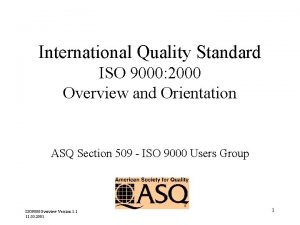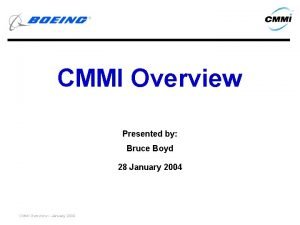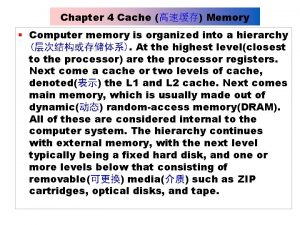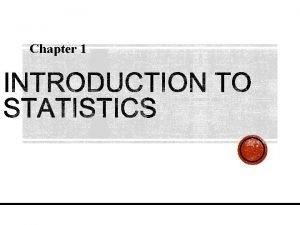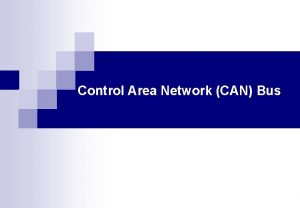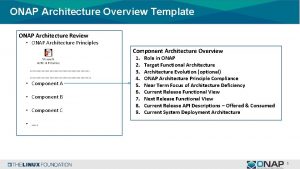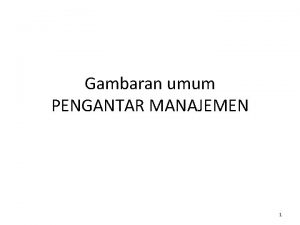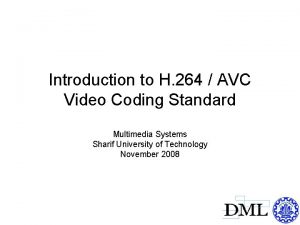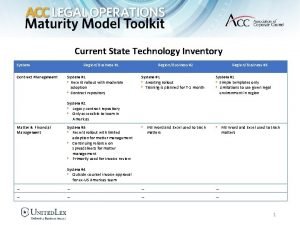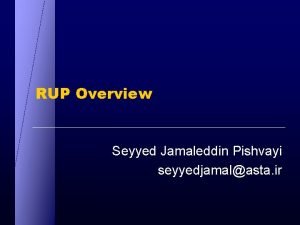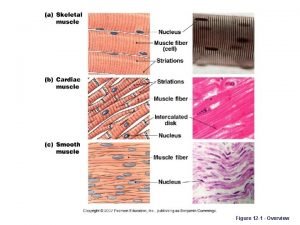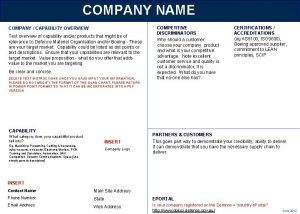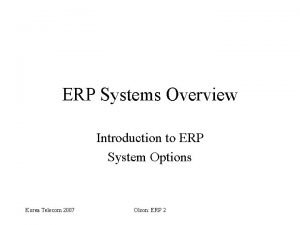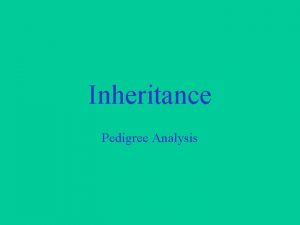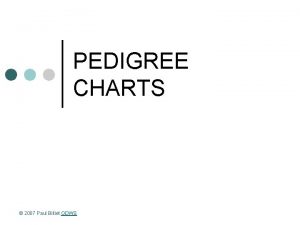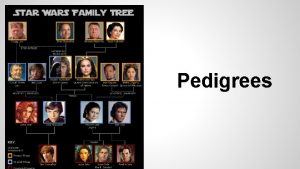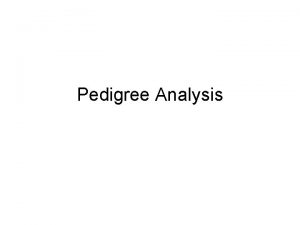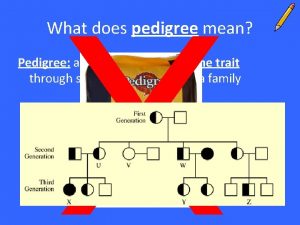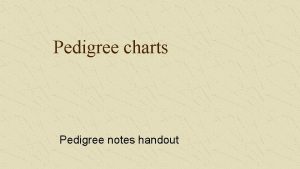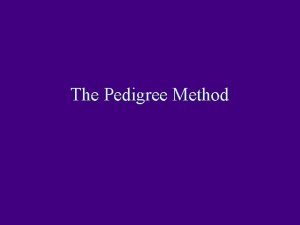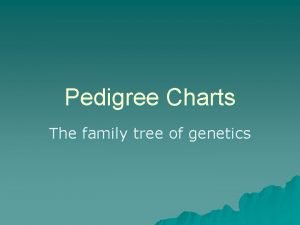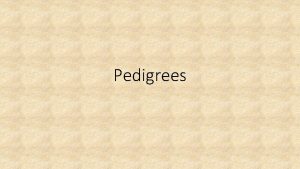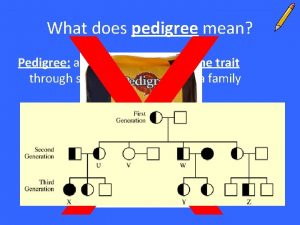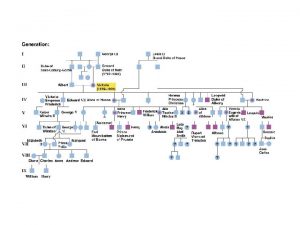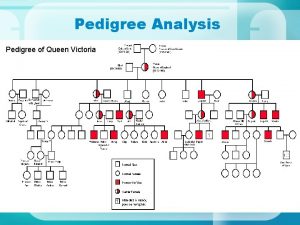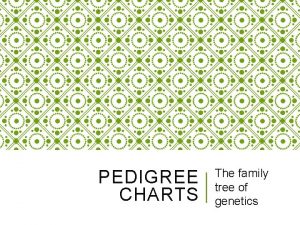PEDIGREE OVERVIEW I What is a pedigree I










































- Slides: 42

PEDIGREE

OVERVIEW I. What is a pedigree? I. II. Definition Uses II. Constructing a pedigree I. II. Symbols Connecting the symbols III. Interpreting a pedigree

WHAT IS A PEDIGREE? • A pedigree is a chart of the genetic history of family over several generations • Genetic counselor would find out about your family history and make this chart to analyze.

CONSTRUCTING A PEDIGREE • Female • Male

CONNECTING PEDIGREE SYMBOLS Examples of connected symbols • Fraternal Twins • Identical Twins

CONNECTING PEDIGREE SYMBOLS Examples of connected symbols • Married Couple • Siblings

WHAT DOES A PEDIGREE CHART LOOK LIKE? A B

Pedigree Symbols Marriage / Partnership (horizontal line) Male Female / Partnership that has ended Person whose sex is unknown P Pregnancy Offspring (vertical line) Miscarriage X weeks Affected Male & Female Parents and Siblings Carrier Male & Female © 2012 NHS National Genetics Education and Development Centre Genetics and genomics for healthcare www. geneticseducation. nhs. uk

INTERPRETING A PEDIGREE CHART 1. Determine if the pedigree chart shows an autosomal or X-linked disease. - If most of the males in the pedigree are affected the disorder is X-linked - If it is a 50/50 ratio between men and women the disorder is autosomal

EXAMPLE OF PEDIGREE CHARTS • Is it autosomal or X-linked

ANSWER • Autosomal

INTERPRETING A PEDIGREE CHART 2. Determine whether the disorder is dominant or recessive. - If the disorder is dominant, one of the parents must have the disorder. - If the disorder is recessive, neither parent has to have the disorder because they can be heterozygous.

EXAMPLE OF PEDIGREE CHART • Dominant or Recessive?

ANSWER • Dominant

EXAMPLE OF PEDIGREE • Is it dominant or recessive?

ANSWER Recessive

SUMMARY • Pedigrees are family trees that explain your genetic history • Pedigree are used to find out the probability of a child having disorder in a particular family • To begin to interpret a pedigree, determine if the disease or condition is autosomal or X-linked and dominant or recessive.

ACTIVITY • Trace the pedigree of each family and determine what type of inheritance. a. Family A: the father has heart disease while the mother has no illness problem at all. b. Family B: both father and mother is a carrier of genetic disease.

COLLECTING FAMILY HISTORY INFORMATION This presentation can be used as part of Lesson Plan 3 Taking and Drawing a Family History. It can also be used with the Family History booklet available on the website. If individual slides are taken for use in other presentations please ensure appropriate copyright is taken into account © 2012 NHS National Genetics Education and Development Centre Genetics and genomics for healthcare www. geneticseducation. nhs. uk

© 2012 NHS National Genetics Education and Development Centre Genetics and genomics for healthcare www. geneticseducation. nhs. uk

Why collect family history information? • Patient concern • Clinical feature • Routine assessment • Result of screening test • Opportunistic © 2012 NHS National Genetics Education and Development Centre Genetics and genomics for healthcare www. geneticseducation. nhs. uk

What information should you collect? • Information depends on the context and reason for collecting it: • Establish biological relationships • Clarify the medical conditions that people have • 3 generations • For each person: • Full name • Date of birth (or age) • Date of death (or age died) • Medical information (age at diagnosis) © 2012 NHS National Genetics Education and Development Centre Genetics and genomics for healthcare www. geneticseducation. nhs. uk

How should the information be recorded? • Longhand notes • Family history form • Family tree © 2012 NHS National Genetics Education and Development Centre Genetics and genomics for healthcare www. geneticseducation. nhs. uk

Drawing a family tree Marriage / Partnership (horizontal line) Male Female / Partnership that has ended Person whose sex is unknown P Pregnancy Offspring (vertical line) Miscarriage X weeks Affected Male & Female Parents and Siblings Carrier Male & Female © 2012 NHS National Genetics Education and Development Centre Genetics and genomics for healthcare www. geneticseducation. nhs. uk

STEPS IN TAKING AND RECORDING A GENETIC FAMILY TREE










© 2012 NHS National Genetics Education and Development Centre Genetics and genomics for healthcare www. geneticseducation. nhs. uk

Acting on the information collected • Reassure • Knowledge of the condition • Local/national referral guidelines • Refer • To the GP or clinical genetics service • Seek further advice • Trusted sources of information • Clinical Genetics Department On-Call Service © 2012 NHS National Genetics Education and Development Centre Genetics and genomics for healthcare www. geneticseducation. nhs. uk

• Multiple closely related people with the same condition • Disorders which occur at a younger age than usual (e. g. colon cancer, breast cancer, dementia) • Sudden cardiac deaths in people who seemed healthy • Three or more pregnancy losses • Medical problems in children of parents related by blood • Congenital anomalies, dysmorphic features and developmental delay • Clues specific to the condition of concern © 2012 NHS National Genetics Education and Development Centre Genetics and genomics for healthcare www. geneticseducation. nhs. uk

WWW. GENETICSEDUCATION. NHS. UK © 2012 NHS National Genetics Education and Development Centre Genetics and genomics for healthcare www. geneticseducation. nhs. uk


Clinical Genetics Services © 2012 NHS National Genetics Education and Development Centre Genetics and genomics for healthcare www. geneticseducation. nhs. uk

WWW. GENETICSEDUCATION. NHS. U K © 2012 NHS National Genetics Education and Development Centre Genetics and genomics for healthcare www. geneticseducation. nhs. uk

• Practising sheets and videos
 Chapter 32 an overview of animal diversity
Chapter 32 an overview of animal diversity Consulting industry overview
Consulting industry overview Solar massachusetts renewable target (smart) program
Solar massachusetts renewable target (smart) program Iso 9000 overview
Iso 9000 overview Iptv technoligies
Iptv technoligies C language overview
C language overview 7 series overview
7 series overview Overview table
Overview table Target customers of kfc
Target customers of kfc Cmmi overview
Cmmi overview Satisfy client request without involving origin server
Satisfy client request without involving origin server Citibank overview
Citibank overview Computer memory system overview
Computer memory system overview Overview of cellular respiration
Overview of cellular respiration Topologi partial mesh
Topologi partial mesh Overview of education in health care
Overview of education in health care An overview of statistics
An overview of statistics Eskom overview
Eskom overview Walmart operations management
Walmart operations management Overview chemical bonds
Overview chemical bonds Can bus overview
Can bus overview Architecture review template
Architecture review template An overview of money
An overview of money Management overview
Management overview Overview of government accounting
Overview of government accounting Overview broadcom february
Overview broadcom february Ssrs overview
Ssrs overview Video coding
Video coding Review paper introduction
Review paper introduction Overview of the current state of technology
Overview of the current state of technology Generations overview
Generations overview Maximo work order priority
Maximo work order priority Versailles overview
Versailles overview Rup overview
Rup overview Overview manajemen keuangan
Overview manajemen keuangan Section 8-2 photosynthesis an overview answer key
Section 8-2 photosynthesis an overview answer key Figure 12
Figure 12 Cell signaling overview
Cell signaling overview An overview of data warehousing and olap technology
An overview of data warehousing and olap technology Overview text
Overview text Overview
Overview Sap erp system overview
Sap erp system overview Methodologies for cross-domain data fusion: an overview
Methodologies for cross-domain data fusion: an overview



